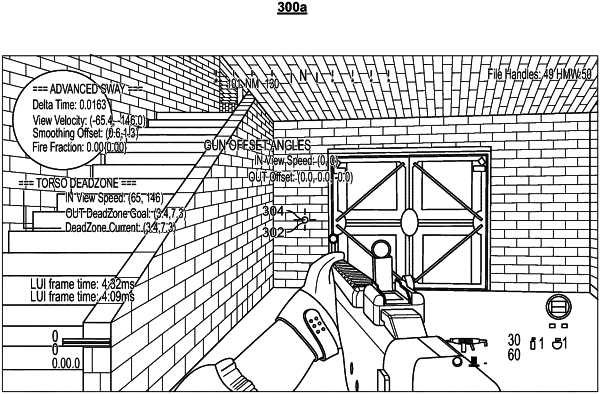| CPC A63F 13/53 (2014.09) [A63F 13/56 (2014.09); A63F 13/57 (2014.09); A63F 13/65 (2014.09); G06T 13/40 (2013.01); A63F 2300/6009 (2013.01); A63F 2300/6018 (2013.01)] | 20 Claims |

|
1. A method of programming a virtual character in a video game, wherein the virtual character is characterized by a torso having a torso mass and a torso anchor, the method being implemented by at least one server executing a plurality of programmatic instructions and comprising:
generating, in at least one graphical user interface, one or more first parameter inputs for customizing an orientation of the torso;
receiving responses to said one or more first parameter inputs;
generating, in the at least one graphical user interface, one or more second parameter inputs for customizing characteristics of a first two-dimensional mass-spring-damper system, wherein the first two-dimensional mass-spring-damper system connects the torso orientation to an orientation of the torso anchor;
receiving responses to said one or more second parameter inputs; and
rendering the virtual character in accordance with the first parameter inputs and the second parameter inputs.
|